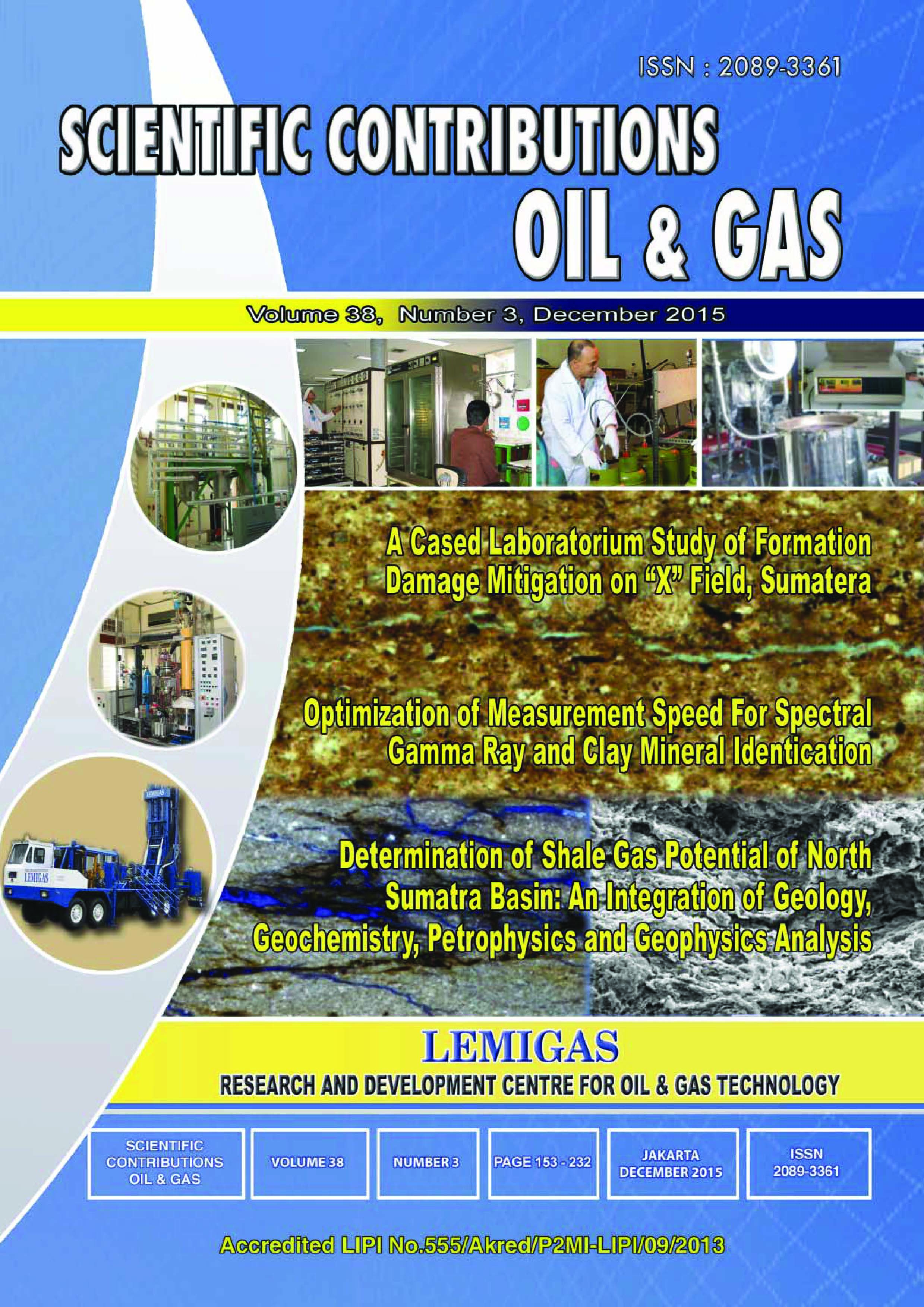HYDROCARBON SHALE POTENTIAL IN TALANG AKAR AND LAHAT FORMATIONS ON SOUTH AND CENTRAL PALEMBANG SUB BASIN
DOI:
https://doi.org/10.29017/SCOG.38.3.549Keywords:
Shale hydrocarbon, Talang Akar Formation, Lemat/Lahat Formation, TOC, Unconventional oil and gasAbstract
South and Central Palembang Sub - basin over Talang Akar (TAF) and the Lemat/Lahat Formations (LEF/LAF) has shale hydrocarbons (HC shale) which are considerably promising. Seismic interpretation results shows potential HC shale scattered in several areas around the Rukam-1, Kemang-1, Lion-1 and Tepus-1 wells. Generally, thermal modeling results indicates early maturity of oil on the value of Ro = 0.6% at about 2000 m depth (h), the formation of oil on the value Ro = (0.7-0.9)% at between (2200 £ h <3100) m depth and formation of gas at Ro values between (0.9-1.2)% at a depth between (3100-3500)m. Talang Akar and Lahat/Lemat Formations have a shallow marine depositional environment with Type II/III kerogen and lacustrine with Type III kerogen. Based on advanced seismic data processing (a method of seismic attributes and spectral decomposition) these areas are expected to have a TOC>2% value that qualifies as shale HC. The assessment (P-50) of potential non-conventional oil and gas resources at Talang Akar and Lahat/Lemat Formations is estimated to be fairly large (up to 4200 MMBOE).
References
Argakoesoemah, R. M. I. and Kamal, A., 2004. Ancient Talang Akar Deepwater Sediments in South Sumatra Basin: A New Exploration Play. Indonesian Petroleum Association, Proceedings, Deepwater and
Frontier Exploration In Asia & Australia Symposium, pp 251-268.
BEICIP, 1985. Hydrocarbon potential of western Indonesia, pp 93-113.
Bishop, M. G., 2001. South Sumatra Basin Province, Indonesia: The Lahat/Talang Akar-cenozoic Total PetroleumSystem.
Chopra S., Sharma R., and Marfurt K., 2013, Shale Gas Reservoir Characterization Workflows, AAPG Annual Convention and Exhibition.
de Coster, G.L., 1974. The Geology of the Central and South Sumatra Basins. Proceedings Indonesian Petroleum Association 3rd Annual Convention, pp. 77- 110.
Downey M.W., J. Garvin, R.C. Lagomarsino, and D.F. Nicklin, 2011, Quick Look Determination of Oil-in-Place in Shale Oil Resources Plays: AAPG Annual Convention and Exhibition.
Ginger, D. and Fielding, K., 2005. The Petroleum Systems and Future Potential of the South Sumatra Basin. Indonesian Petroleum Association 18th Annual Convention, August, 2005, pp 67-89.
Jarvie, D.M., 2008, Unconventional Shale Resource Plays: Shale-Gas and Shale-Oil Opportunities, Fort Worth Business Press meeting.
LEMIGAS, 2001. Studi Intregrasi Paleogen Synrift Sedimen Cekungan Sumatra Selatan ; Pendekatan Analisis Palinologi/Palinofasies Dan Petrografi. Studi Intregrasi Paleogen Synrift Sedimen Cekungan Sumatra Selatan ;Pendekatan Analisis Palinologi/Palinofasies Dan Petrografi.
Sarjono, S. and Sardjito, 1989. Hydrocarbon Source Rock Identification in the South Palembang Sub-basin: Proceedings Indonesian Petroleum Association, 18th Annual Convention, pp 427-467.
Sondergeld, C.H., Newsham, K.E., Comisky, J.T., Rice, M.C. and Rai, C.S., 2010, Petrophysical Considerations in Evaluating and Producing Shale Gas Resources, SPE Unconventional Gas Conference.
Suseno, P.H., Zakaria, Mujahidin N., Nizar, Eddy A. S., 1992. Contribution Of Lahat Formation As Hydrocarbon Source Rock In South Palembang Area, South Sumatera, Proceedings Indonesian Petroleum Association, pp 325 -337.
Pertamina-BPPKA, 1997. Petroleum geology of Indonesian basins: principles, methods and applications, volume X, South Sumatra Basin, Pertamina BPPKA, 81 p.
Yuliandri I., Melianie A., Dedy Y., Medy K., dan Musalam L., 2013, Shale Gas Resources of Lahat Formation at Topaz Area, Indonesia, International Conference and Exhibition, Cartagena, Colombia,
September 8-11, 2013.


